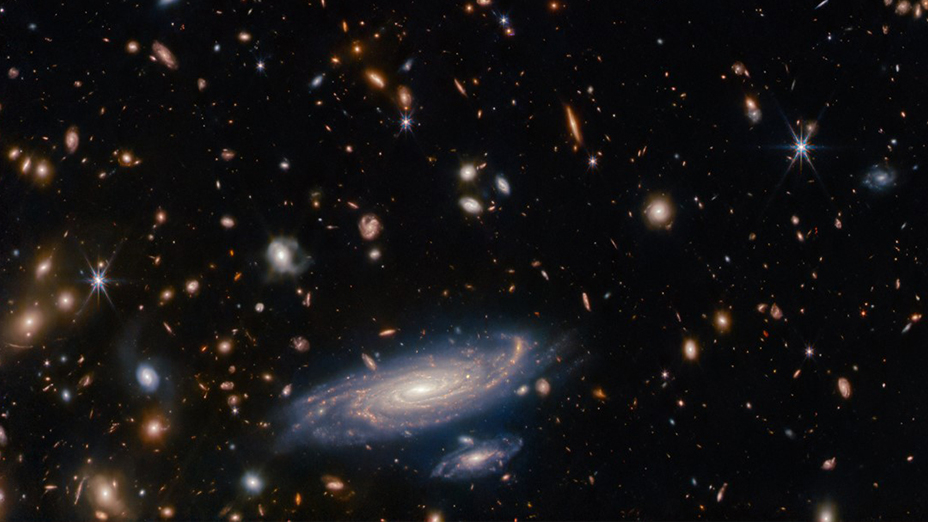James Webb Space Telescope sees early galaxies defying 'cosmic rulebook' of star formation
"It was like the galaxies had a rulebook that they followed — but astonishingly, this cosmic rulebook appears to have undergone a dramatic rewrite during the universe’s infancy."

The James Webb Space Telescope (JWST) has discovered that galaxies in the early universe were cosmic rule-breakers. This discovery sheds light on how early galaxies evolved and the fundamental processes that shaped the universe as we see it today.
To discover the truth about these cosmic scofflaws, a team of astronomers used the JWST to gaze over 12 billion years back in time and observe galaxies as well as the rules they followed through cosmic history. The crew found that the same set of rules continuously prevailed, connecting the rate of star birth to galactic masses to chemical compositions. But these rules traced only so far back. The earliest galaxies defied them.
It was like the galaxies had a rulebook that they followed — but astonishingly, this cosmic rulebook appears to have undergone a dramatic rewrite during the universe’s infancy," Claudia Lagos, an associate professor at the University of Western Australia, said in a statement. "The most surprising discovery was that ancient galaxies produced far fewer heavy elements than we would have predicted based on what we know from galaxies that formed later."
This disparity hadn’t been spotted before because instruments used prior to the JWST hadn’t been powerful enough to see the chemical makeup of galaxies as far back as around 11 billion years ago. The JWST, however, allowed this team to look back to just a few hundred million years after the Big Bang, which showed a break in the relationship between star formation, mass and chemistry.
Related: James Webb Space Telescope detects 1st evidence of carbon on Jupiter's icy moon Europa
When did things get heavy for the cosmos?
When the universe first began to form the first stars and galaxies, it was filled with hydrogen and helium — the two lightest elements — with the former being the most dominant by far.
Only a smattering of heavier elements-which astronomers call “metals” existed until the first generation of stars forged them at their hearts and then dispersed them through the universe at the end of their lives via massive supernova explosions.
Breaking space news, the latest updates on rocket launches, skywatching events and more!
This material was eventually incorporated into the next generation of stars, meaning these stars, and thus the galaxies they sit in, had a higher concentration of metals — a measure called "metallicity." That process of metal enrichment has continued throughout the entire 13.8 billion years of cosmic history, meaning early galaxies are indeed expected to have lower metallicities than their modern counterparts.
But even factoring this in, the team found that the metallicity of early galaxies was still lower than expected. Much lower.
"Their chemical abundance was approximately four times lower than anticipated, based on the fundamental-metallicity relation observed in later galaxies," Lagos continued, explaining that the early galaxies observed by the team delivered even more surprises.
The team suggests the disparity may exist because galaxies just a few hundred million years after the Big Bang could still be intimately connected with the intergalactic medium — the wispy hot gas and dust that exists between galaxies.
"The early galaxies continually received new, pristine gas from their surroundings, with the gas influx diluting the heavy elements inside the galaxies, making them less concentrated," Lagos concluded.
As such, the team’s findings could challenge current models of galactic evolution and the mechanism that facilitated the development of the first galaxies.
The research was published on Sept. 21 in the journal Nature.

Robert Lea is a science journalist in the U.K. whose articles have been published in Physics World, New Scientist, Astronomy Magazine, All About Space, Newsweek and ZME Science. He also writes about science communication for Elsevier and the European Journal of Physics. Rob holds a bachelor of science degree in physics and astronomy from the U.K.’s Open University. Follow him on Twitter @sciencef1rst.
